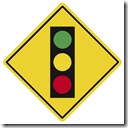WHEN IS “ENOUGH” ENOUGH IN SALES? – PART I
 Wouldn’t it be helpful to know how much detail to provide your customer or prospect regarding your product or service? One of the biggest challenges in our sales communication and in communicating with others in general is to know when enough is enough. This has to do with the amount of detail one interjects in a given communication and more specifically how much detail with which to begin and to end a conversation or a sales presentation, whether in person or online.
Wouldn’t it be helpful to know how much detail to provide your customer or prospect regarding your product or service? One of the biggest challenges in our sales communication and in communicating with others in general is to know when enough is enough. This has to do with the amount of detail one interjects in a given communication and more specifically how much detail with which to begin and to end a conversation or a sales presentation, whether in person or online.
The amount of detail we use in communication is based on the Chunk Size People Pattern™ which is one element of the Information People Pattern™. A good knowledge of the Chunk Size People Pattern™ is critical in sales. Chunk size has to do with the scope and depth of information that we give in a communication exchange. There are two types of people that comprise the Chunk Size People Pattern™: 1) global and 2) specific.
Global people have a preference for scope. They are interested in the big picture and see the forest for the trees. They are most comfortable with large chunks of information. Specific people, however, prefer to communicate details and specifics. They are interested in the trees rather than the forest. They are most at home with small bits of data and information.
What we have found in working with salespeople in different firms over the years is that salespeople either tend to give too many or too few details. There are particular scenarios that often crop up. It is that some salespeople have a great deal of product knowledge and are so excited about telling their prospect or customer so much about their product or service. This thrills the specific people and totally annoys and/or turns off the global people. Global customers view salespeople who give too many details as boring and at times irrelevant. They literally tune out of the specific sales presentation.
On the other side of the coin, if a salesperson doesn’t have a lot of product knowledge, then he or she will not be able to please the customer or prospect who has a specific orientation. Each side perceives the other side as an “idiot.” The specific customer will consider the global sales presentation to be fluff and will tend to think that the salesperson is clueless. The global salesperson will come across to the specific customer as someone who doesn’t know what he or she is talking about.
In short, when it comes to selling anything, specific product knowledge is really important, and the key is for the salesperson to know:
- To which type of customer or prospect to give the information
- How much information to give the customer or prospect
AND MOST IMPORTANT
- When to shut up.
This is where a knowledge of the Chunk Size People Pattern™ is so critical in sales. In sales, you must be able to recognize whether your customer is global or specific, and then be able to customize your communication accordingly. Remember that people who are specific always want more, and global people often think that they are given too much.
So the question is: When is enough, enough? Now you know.
Next time, we’ll discuss how to present your information to each of these two types of customers: global and specific.
By Marilyne Woodsmall
——————————
This is from www.TheScienceOfIdiots.com . And I have mentioned previously, if you are interested in understanding the motivations of your customers and in the most basic terms “Get them to buy more of your stuff” then you should get a copy of here book “Personality Language” . Most of the best Gurus out their use Marilyne and Wyatt Woodsmall’s materials even if they don’t tell you they do. This runs from Tony Robbins to Eben Pagan and dozens of others out there in both the Internet and Brick and Mortar arenas.
I will post the other portion of this in the next day or so… I am trying to do another interview with Marilyne here in the next week. As a big tease, I am going to get her to give up some info to help you get inside how to trigger a buying response from your customer. You can read about it here or you can pay their fee of $850 per hour. I have to tell you that they are worth every bit of it and more.
Cheers,
Andrew “Easy” Anderson
One Response